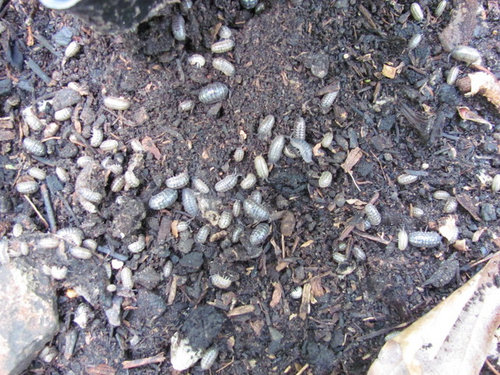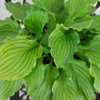Definitely re-thinking compost!
mosswitch
10 years ago
Related Stories

PETSSo You're Thinking About Getting a Dog
Prepare yourself for the realities of training, cost and the impact that lovable pooch might have on your house
Full Story
GARDENING GUIDESGet on a Composting Kick (Hello, Free Fertilizer!)
Quit shelling out for pricey substitutes that aren’t even as good. Here’s how to give your soil the best while lightening your trash load
Full Story
GARDENING GUIDESNew Ways to Think About All That Mulch in the Garden
Before you go making a mountain out of a mulch hill, learn the facts about what your plants and soil really want
Full Story
HOME TECHUltrahigh-Definition 4K TVs Sharpen Their Sights on the Home
Pixelation? What pixelation? The latest breed of TV offers a smoother picture than ever before — and the price is dropping all the time
Full Story
MOST POPULARHow to Create an Inventory, Whether You're Naturally Organized or Not
Documenting your home items is essential, even if disaster seems unimaginable. And it may be easier than you think
Full Story
SMALL KITCHENS10 Things You Didn't Think Would Fit in a Small Kitchen
Don't assume you have to do without those windows, that island, a home office space, your prized collections or an eat-in nook
Full Story
DECORATING GUIDESPro to Pro: Learn Your Client’s Thinking Style
Knowing how someone thinks can help you determine the best way to conduct an interior design presentation
Full Story
BATHROOM DESIGN10 Ways to Think Outside the Bathroom Sink Box
A Better Bathroom Sink: Go Stainless, Go Big, Go Sculptural
Full Story
BATHROOM WORKBOOKStandard Fixture Dimensions and Measurements for a Primary Bath
Create a luxe bathroom that functions well with these key measurements and layout tips
Full Story
HOUZZ TOURSHouzz Tour: Visit a Forward Thinking Family Complex
Four planned structures on a double lot smartly make room for the whole family or future renters
Full StoryMore Discussions










mosswitchOriginal Author
mosswitchOriginal Author
Related Professionals
Walnut Landscape Architects & Landscape Designers · Kaysville Landscape Contractors · Streamwood Landscape Contractors · Springfield Driveway Installation & Maintenance · Agoura Hills Fence Contractors · Baltimore Fence Contractors · Bloomington Fence Contractors · Brushy Creek Fence Contractors · Cartersville Fence Contractors · Channahon Fence Contractors · Sammamish Fence Contractors · Woodinville Fence Contractors · Saratoga Springs Fence Contractors · Coachella Solar Energy Systems · East Hanover Solar Energy Systemsdg
mosswitchOriginal Author
hosta_freak
dg
mosswitchOriginal Author
in ny zone5
mosswitchOriginal Author
bkay2000
Jon 6a SE MA
mosswitchOriginal Author
bkay2000
mosswitchOriginal Author
gogirlterri
mosswitchOriginal Author
mosswitchOriginal Author
mosswitchOriginal Author
mosswitchOriginal Author
dg
mosswitchOriginal Author
ken_adrian Adrian MI cold Z5
dg
mosswitchOriginal Author
josephines167 z5 ON Canada
josephines167 z5 ON Canada
don_in_colorado
mosswitchOriginal Author
mosswitchOriginal Author